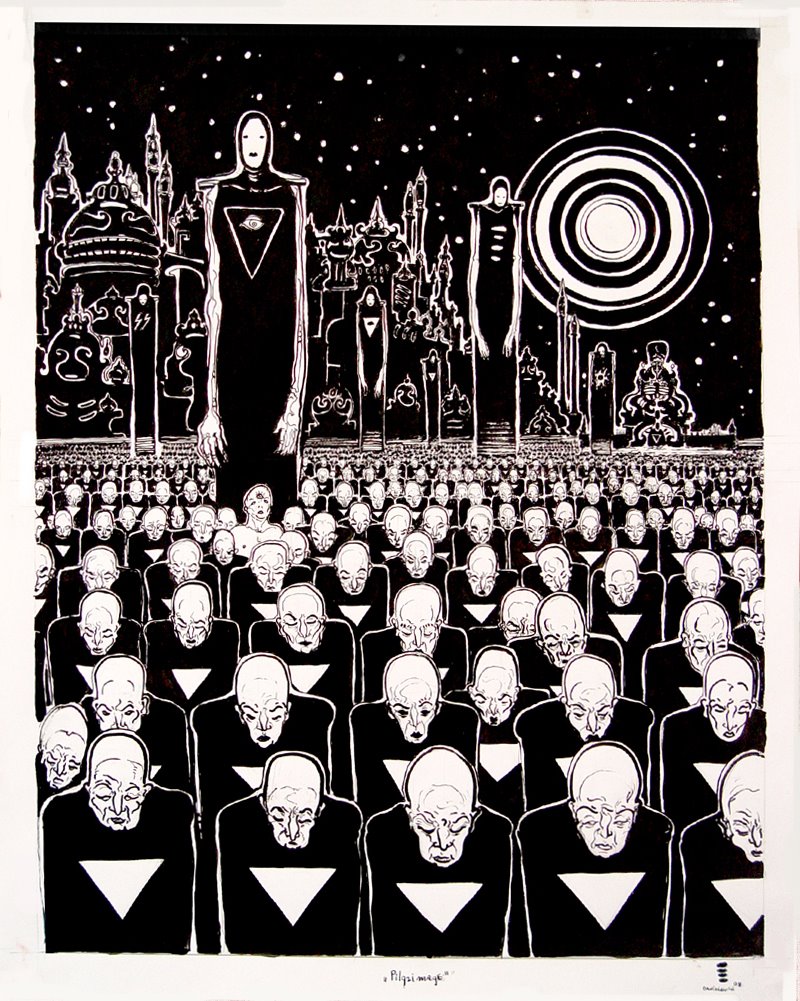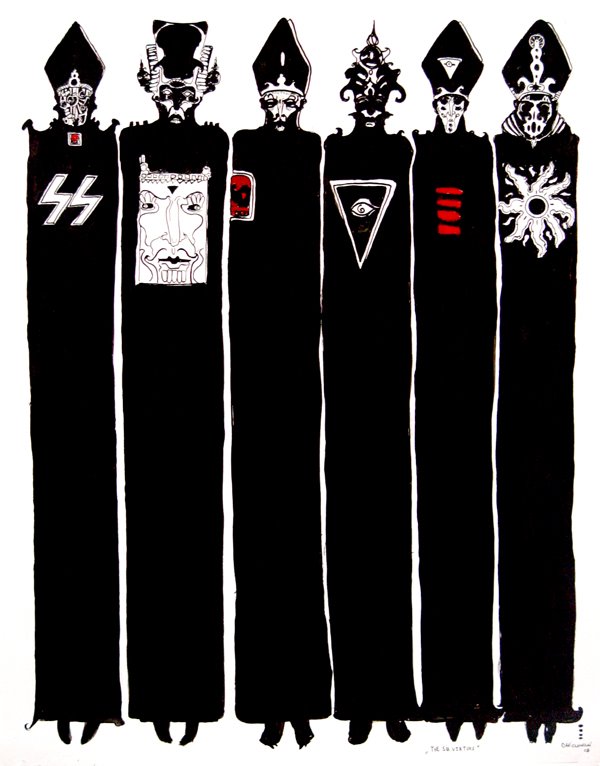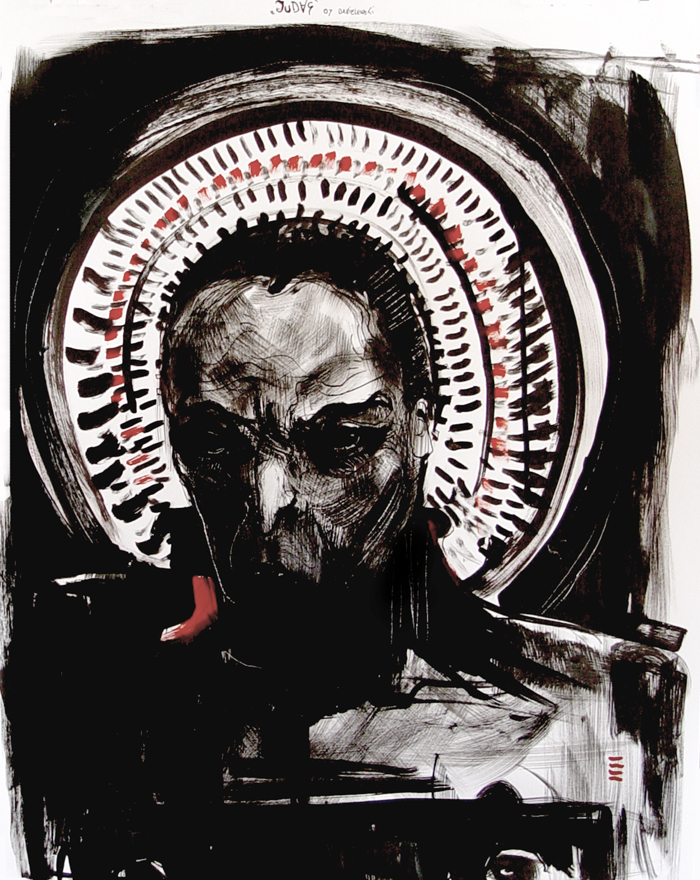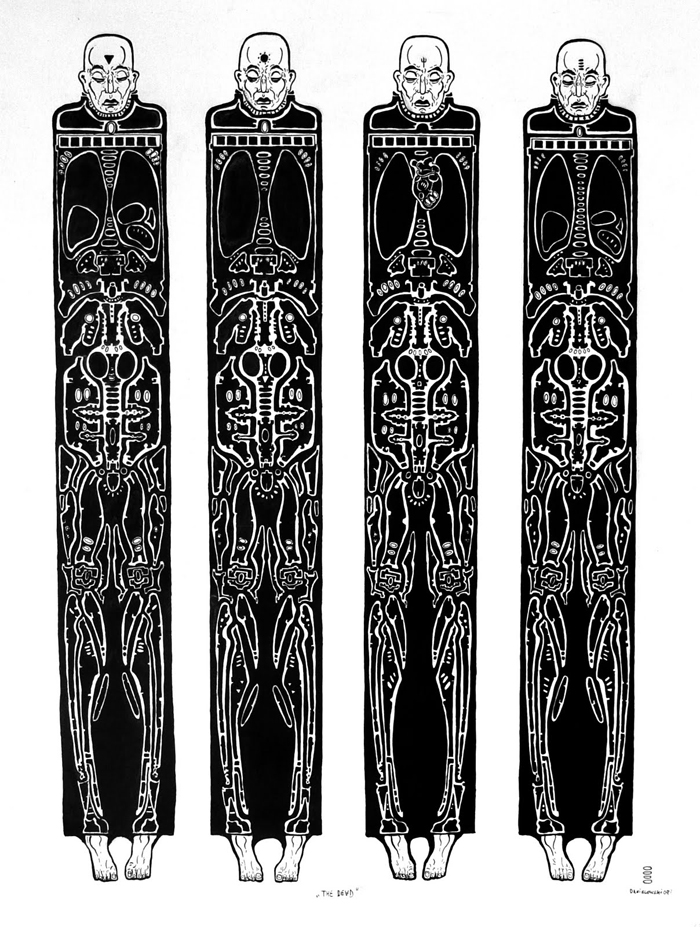My name is Marek Danielewski and I have been diagnosed properly with Bipolar Disorder for about 9 years. While I know I suffered longer, I found ways of self-therapy and treatment. I wanted to submit my art and ideas on ‘bipolar and art’ to the blog to inform, inspire and educate.
After some thought I decided to simply put in my art statement and images from the show. I worked pretty hard on the art statement and I believe it says everything that I want. Especially the name of the show “Messiah Complex” which is something I found inside me during the time prior to my treatment. I hope to move the show to other areas, outside of Philadelphia. I have also contacted physiological departments of universities to show the work to psychology students. While it is my perspective and I do not speak (or draw) for everyone it is my personal reflection of my condition.
Messiah Complex
“A complex psychological state when a person believes that he or she is a savior today or he or she will be in the near future. This kind of psychological issue is usually acquired by patients who have schizophrenia and bipolar disorders. It is true that people can always be a savior. However, acting as the savior of the whole world is somewhat impossible.”
A definition of the utmost importance because I suffer from Bipolar Disorder. I consider this work to be a product of that. Most especially the fact that I was not as aware of it as I am now. That is the condition. I was in the early stages of therapy and as my psychologist said my artwork was (and is still) the glue that was keeping me together mentally.
This body of work was created due to the fact that it was created while not being aware of my own mental illness but rather making my work in the form of unintentional self therapy. I started inking as a student in New York. Interested in symbolism, old and contemporary, I was influenced by the works of H.R. Geiger, Aubrey Beardsley, and Michael Manning. I soon found myself struggling with oil painting and within the illustration program feeling trapped and among stiff competition. I took solace in inking late at night, when I would get back from the school studio, tucked in my tiny dorm room. My early inks were clearly influenced by a very painterly, loose approach. Later in my determination to eradicate any remnants of painting and color I finally arrived at pieces like “The Dead.”
The work is a reflection of my self-radicalization within my personal life and my socio- political views; I was struggling with my existentialist education and spiritual exploration. At the time that I was making the inks I thought of them as schematics for a fascist utopian society. My view of the world became black and white. All my previously held beliefs became radicalized and extreme, fueled with magical thinking. To say that I was an angry young man would be an understatement.
Five years have passed since the last ink was made. I find myself to be very distant from the person that created this work. Now that I’m self-aware both of my condition as well as the gray that is all of our existence I know that I’ll never make work like this again – with that type of innocence.
There is no cure and perhaps there should never be one, but I no longer suffer from the Messiah Complex.






